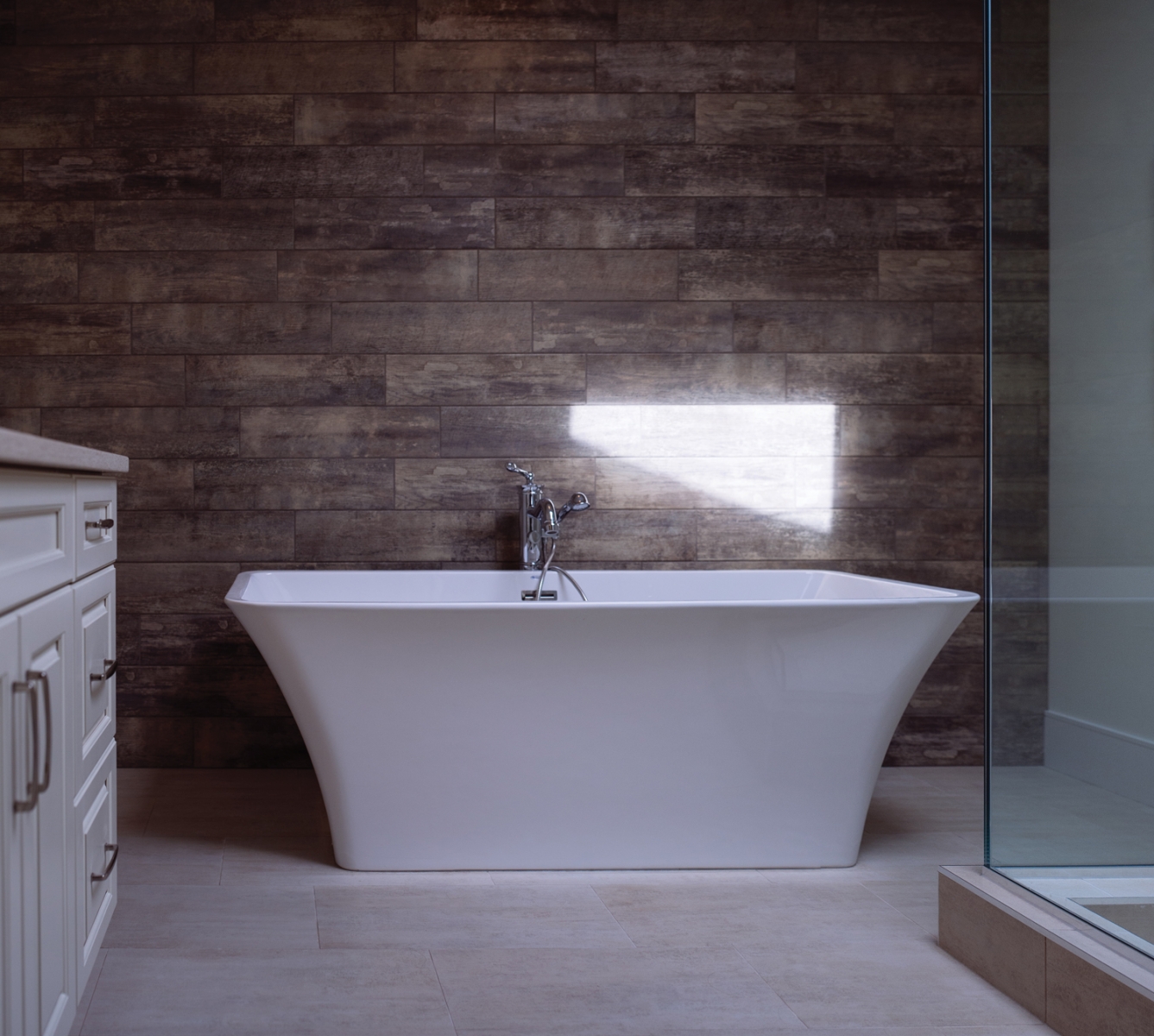To untrained eyes, it may look as though the interior-design world has been infiltrated by a legion of attractive fraudsters. Products that mimic the look and feel of hardwood, natural stone, exposed brick and even leather have earned places in many interior designers’ toolboxes, and are on display in homes across the city. But this trend in home decor isn’t unwanted cheapening of aesthetics. What was once considered an interior-design faux pas is still very much faux, but thanks to improvements in quality and aesthetics, these products make for a stylish alternative to traditional building materials and home finishes.
“We use a lot of the faux stone products and faux wood flooring because the colour range is much broader, meaning you can be a lot more creative with the styles,” says Tracy Fortin, who started Flawless Interiors Inc. with her husband, Keith, in 2008. “In the last few years, it has just exploded with what is available. There are so many options now and the quality has improved so much. It gives us a lot more design flexibility.”
Fortin regularly suggests products like wood grain vinyl flooring and porcelain tiles to her clients. The manufactured material mimics the natural qualities of hardwood – available in scraped, knotted, grooved or flat finishes – without the stress of upkeep. “What I find now, is that people want to actually live in their homes. People really want something that is stylish, but not something that they are going to have to stress about all the time.”
And while the initial cost of some flooring may be cheaper, working with these specialty materials can still carry a hefty price tag. With higher-end products available on the market, faux wood flooring may cost close to, or even slightly more, per square foot than the real deal. According to Fortin, the vinyl wood planks can save you on average half what hardwood will, but high-end wood grain porcelain tiles may find you shelling out even more. In either case, the time and money saved on maintenance helps to offset the initial investment. “Typically, these products are very easy to maintain. You don’t have to refinish them, so the lifespan on the vinyl and porcelain is much longer.” The versatility and longevity of these materials is what piqued Som Sourachit’s interest. Sourachit is the Vice President of design for Novhaus, an Edmonton-based company that specializes in environmentally sustainable steel-framed houses made using old shipping containers. The durability of these products means that it spends more time in your home and less in the landfill, and improved manufacturing practices reportedly cut down on harmful chemicals being released into the environment.
